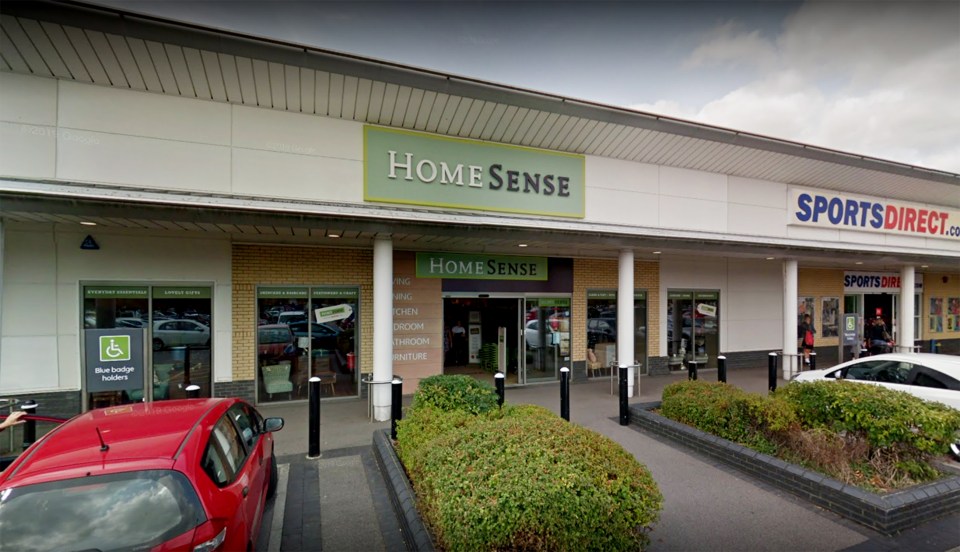Why Are Shops Closing Stores?
Shoppers have just a few hours left to seize a bargain as a beloved homeware store prepares to close its doors permanently. The Homesense location in Stafford is set to shut down on Monday, March 31, and in a bid to clear out its inventory, the store has launched a substantial 30% off sale. Homesense, part of the same parent company as TK Maxx, specializes in offering discounted designer homewares including furniture, lighting, rugs, kitchenware, and garden accessories.
Despite its popularity among consumers for providing high-quality items at lower prices, the chain could not escape the wave of high street closures that have plagued the retail sector. When the news of the impending closure was announced earlier this month, disappointment echoed through the community. One customer expressed their sorrow on social media, stating, “I travel an hour just to visit this shop. I’m absolutely devastated. We need more Homesense stores, not fewer!” Another lamented, “That was a fantastic shop. What will be next, another £1 store?” A third customer shared their shock and sadness, saying, “I was in total disbelief and felt heartbroken when I visited on Wednesday. I genuinely love that shop and make the trip from Uttoxeter just to shop there.”
Homesense had previously closed another store in February, with the Salisbury location shutting down due to the expiration of its lease, as confirmed by a company spokesperson at the time. Currently, the chain operates just under 80 stores across the UK.
This year has seen several well-known retailers announcing store closures, including WHSmith, New Look, and Next. WHSmith is slated to close up to 20 stores as part of a significant rebranding effort that will see the chain retreat from the high street entirely. Meanwhile, New Look has recently closed its locations in St Austell and Gateshead, Tyne and Wear, as well as stores in Porth, Rhondda Cynon Taf, and Wickford, Essex. Next has also confirmed the closure of its Huddersfield store, effective July.
Why Are Retailers Closing Stores?

The challenges facing UK high streets have intensified in recent years, driven by a multitude of factors. Shoppers are reining in their spending due to soaring inflation, while the costs for brick-and-mortar businesses continue to rise. Retailers are grappling with elevated business rates, skyrocketing energy bills, and increasing rents.
Additionally, a growing number of consumers are opting for the convenience of online shopping, further exacerbating the challenges faced by physical stores. Unfortunately, the retail sector is bracing for further difficulties ahead. Starting in April, the minimum wage will rise to £12.21 per hour, with the minimum wage for those aged 18-20 increasing to £10 per hour, which is expected to put additional strain on retailers. The Government’s decision to raise National Insurance contributions for employers is another factor that businesses say will significantly increase their costs.
Retail Pain in 2025
The British Retail Consortium has projected that the Treasury’s increase in employer National Insurance contributions will cost the retail sector approximately £2.3 billion. Research conducted by the British Chambers of Commerce indicates that over half of companies anticipate raising prices by early April. A survey involving more than 4,800 firms found that 55% expect price hikes in the next three months, a notable increase from 39% in a similar survey conducted in the latter half of 2024. Significantly, three-quarters of companies identified the cost of employment as their primary financial pressure.
The Centre for Retail Research (CRR) has also issued a warning, predicting that around 17,350 retail sites are expected to close this year. This follows a challenging 2024, during which 13,000 shops shut their doors permanently, marking a 28% increase over the previous year. Professor Joshua Bamfield, director of the CRR, stated, “The results for 2024 show that although the outcomes for store closures overall were not as poor as in either 2020 or 2022, they are still concerning, with worse outcomes anticipated for 2025.” Professor Bamfield has also forecast a grim outlook for the coming year, predicting that as many as 202,000 jobs could be lost in the retail sector. “By increasing both the costs of running stores and the financial burden on each consumer’s household, it is highly likely that we will witness retail job losses surpassing the peak seen during the pandemic in 2020,” he added.